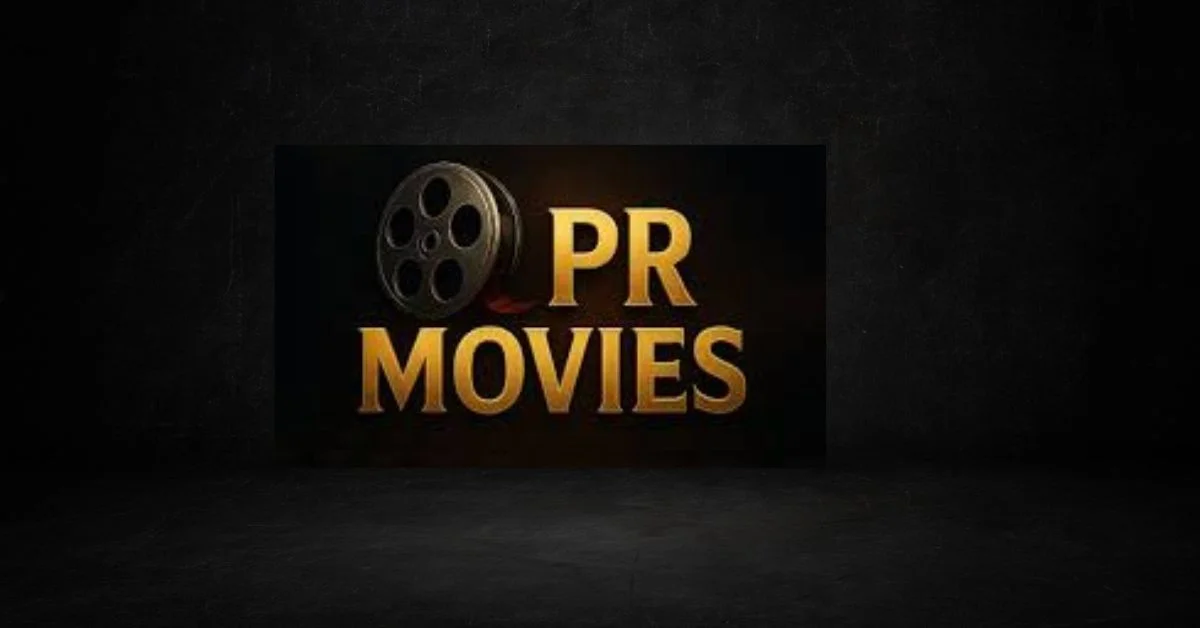In a world increasingly dominated by storytelling, PR movies—films crafted explicitly or subtly to enhance public relations—have become potent tools for shaping opinion, managing reputations, and rewriting narratives. But what exactly is a PR movie? And how has it evolved from corporate-sponsored films to a powerful cultural force?
A PR movie refers to a film—fictional or documentary—strategically produced or supported to shape public perception, enhance reputation, or influence a social or political narrative. These movies can be part of a broader campaign, subtly shifting views through emotional engagement, character portrayal, and selective storytelling. They’re not advertisements, but they’re not neutral either. From political biopics to environmental documentaries sponsored by NGOs, PR- movies span industries and ideologies. This article will unpack their purpose, impact, and ethical implications in an age where opinion is currency.
Understanding the Anatomy of a PR Movie
To grasp what qualifies a film as a PR movie, it’s important to move beyond the assumption that PR equals propaganda. While propaganda aims for control, PR- movies often aim for influence—and the difference is meaningful. A PR movie doesn’t just tell a story; it tells the right story for a specific audience, usually to advance an image, cause, or agenda.
These films often feature:
- A defined message or cause
- Emotional engagement designed to create empathy
- Narratives that reframe or soften criticism
- Backing from an entity with an interest in public sentiment
They may or may not disclose sponsorship or intent. Sometimes, the motive is hidden in plain sight.
A Brief History of Public Relations Through Film
The roots of PR movies go back to the early 20th century. Corporations and governments quickly realized the influence of film on public imagination.
1. World War II and Government-Sponsored Films
During the 1940s, the U.S. Office of War Information produced films like Why We Fight, designed to boost morale and justify American involvement in the war. These were clear PR tools, blending documentary and drama.
2. Corporate Image Films (1950s–1980s)
Companies like GE, Exxon, and IBM produced internal and public-facing films to promote corporate responsibility, innovation, and social value. These films were often screened in educational settings, subtly grooming future consumer loyalty.
3. Modern Branded Documentaries
Today, PR- movies come in the form of streaming documentaries produced by environmental groups, tech companies, or political action committees. Think The Social Dilemma—a cautionary tale about social media, co-produced by former tech insiders with reputational stakes in the narrative.
The Psychology of a PR Movie: Why They Work
PR movies are narrative vehicles, and human beings are hardwired for story. Neuroscience tells us that compelling narratives engage the same parts of our brain that control empathy, emotion, and memory.
These movies work because:
- They dramatize reality, making abstract issues personal and relatable.
- They bypass skepticism, using entertainment to slip past our defenses.
- They create identity alignment, encouraging audiences to see themselves in the protagonists or causes.
In a world where attention is fragmented, PR movies are long-form emotional experiences. They invite the viewer not just to understand, but to feel.
Real-World Examples: Case Studies in Cinematic Influence
To understand the impact of PR- movies, let’s explore several fictional case studies that reflect real-world dynamics.
1. “Clean Skies” – An Energy Company’s Redemption Narrative
This fictional drama follows a coal CEO turned environmentalist, dramatizing his personal transformation. Funded quietly by an energy conglomerate, the film shifts the narrative from pollution to progress, from blame to evolution.
2. “Hearts of Code” – Tech Ethics on Screen
A streaming-platform documentary spotlights ex-employees of a major social media firm blowing the whistle on data abuse. It seems independent but is bankrolled by a rival company, gaining both credibility and narrative power in public debates over AI and privacy.
3. “Reclaiming Red” – A Political Biopic with Strategic Timing
Released months before a national election, this polished film chronicles a conservative leader’s underdog rise, downplaying controversies and emphasizing compassion. It’s not a campaign ad—but it’s also not impartial.
Each example shows how PR movies operate in the cultural bloodstream—camouflaged, compelling, and influential.
Who Produces PR Movies—and Why?
PR movies are commissioned by a diverse set of players:
- Corporations aiming to counter criticism or humanize their brand
- Governments seeking to build trust, deflect scandal, or bolster soft power
- Nonprofits and activist groups hoping to raise awareness or funds
- Political campaigns using cinema to emotionally connect with voters
These films are often produced through independent studios, adding a layer of authenticity. The backing may be strategic and discreet, involving consultants who understand public sentiment and media timing.
The “why” is simple: film moves hearts. A well-executed PR movie can accomplish in 90 minutes what a year of press releases cannot.
Platforms: Where PR Movies Find Their Audiences
The evolution of distribution has expanded the reach of PR movies. Once confined to film festivals and classrooms, these productions now thrive on:
- Streaming platforms like Netflix, Hulu, and YouTube
- Social media campaigns, where shareability amplifies reach
- Public broadcasting and educational partnerships
- Film festivals, offering credibility and media coverage
Importantly, PR movies are designed to be shareable and discussable. They’re often accompanied by online toolkits, hashtags, panel discussions, and influencer endorsements—all coordinated for maximum resonance.
Ethics and Transparency: Where Is the Line?
The rise of PR movies raises difficult questions about truth, bias, and audience manipulation.
- Should funders be disclosed?
- When does influence become misinformation?
- Is emotional storytelling inherently manipulative?
Critics argue that some PR movies function as soft propaganda, especially when intent is concealed. Others see them as necessary counter-narratives in a world dominated by dominant voices.
Transparency is key. As viewers, we should be aware that every film carries an agenda—some more overt, others layered beneath compelling characters and rousing scores.
The Future of PR Movies: AI, Immersion, and Microtargeting
As we look ahead, PR movies are evolving rapidly:
1. AI-Enhanced Scripts and Narratives
Studios may use AI to analyze audience reactions and refine story arcs for maximum emotional impact. That means PR movies will be tailored not just to demographics—but to psychographics.
2. Virtual Reality and Immersive Storytelling
Imagine walking through a refugee camp via VR or experiencing climate change firsthand through simulation. PR movies are poised to become experiences, not just films.
3. Hyper-Targeted Distribution
With advanced data tracking, a film can be released selectively to viewers most susceptible to its message, refining persuasion in a surgical way.
This hyperpersonalization, while powerful, heightens ethical stakes.
Why PR Movies Matter in a Polarized World
In today’s polarized information landscape, traditional journalism struggles to hold attention. Social media thrives on outrage. PR movies occupy a middle ground, where nuance can still live—even if it’s crafted by an interested party.
They can humanize misunderstood causes, challenge harmful myths, and bring underrepresented voices to the surface. But they can also distort history, whitewash wrongdoing, and reinforce existing biases under the guise of empathy.
That’s why critical media literacy is essential. Viewers must ask:
- Who made this?
- Who benefits from its message?
- What perspectives are missing?
A PR movie is never just a movie. It’s an argument in cinematic form.
Conclusion: Watch with Open Eyes, Not Closed Hearts
PR movies are not new, but their power is arguably greater than ever. As storytelling becomes the dominant mode of persuasion, these films will continue to shape how we think, feel, and vote—often without us realizing it.
Some will inspire, others will manipulate. Many will do both.
The most important thing is not to avoid them, but to watch critically. Engage with them. Question them. Talk about them. That’s how we take control of the narratives that increasingly control us.
Because in a world where opinion is shaped more by film than fact, learning to read a PR movie may be just as essential as learning to read the news.
Frequently Asked Questions (FAQs)
1. What is a PR movie?
A PR movie is a film created or supported to influence public perception about a brand, person, organization, or idea—often with an agenda.
2. Are PR movies the same as propaganda?
Not exactly. While both aim to influence, PR movies are often more subtle and emotionally driven, relying on storytelling rather than overt persuasion.
3. How can I identify a PR movie?
Ask who funded the film, consider the timing of its release, and examine whether it portrays only one side of an issue.
4. Why do companies or governments use movies for PR?
Film is an emotionally powerful medium that can shift perception more effectively than advertisements or press releases. It tells a story, not a pitch.
5. Can PR movies be educational?
Yes. Many PR movies, especially documentaries, offer genuine insight and emotional resonance. However, viewers should remain aware of the producer’s intent.
For more information, click here.









